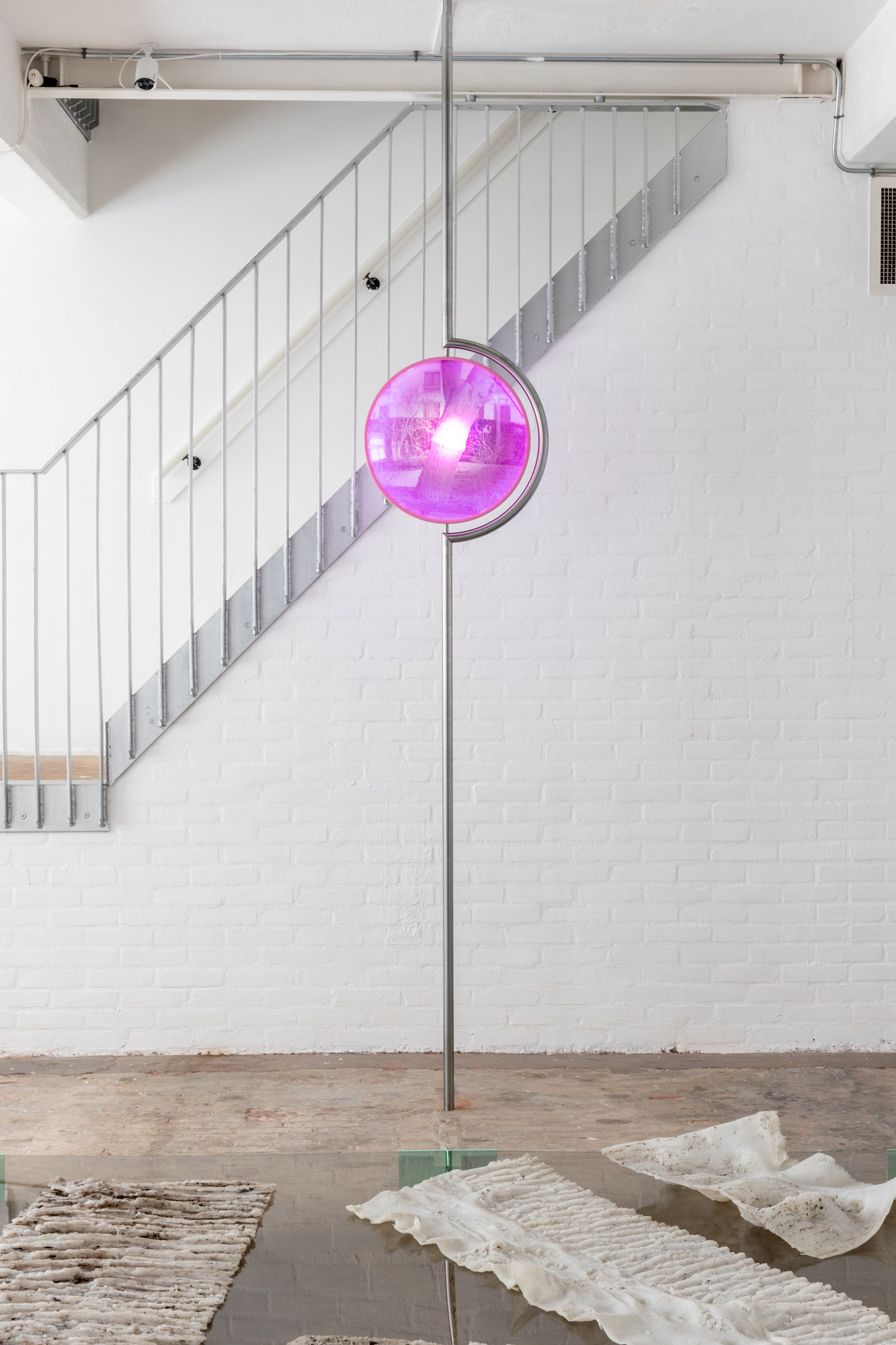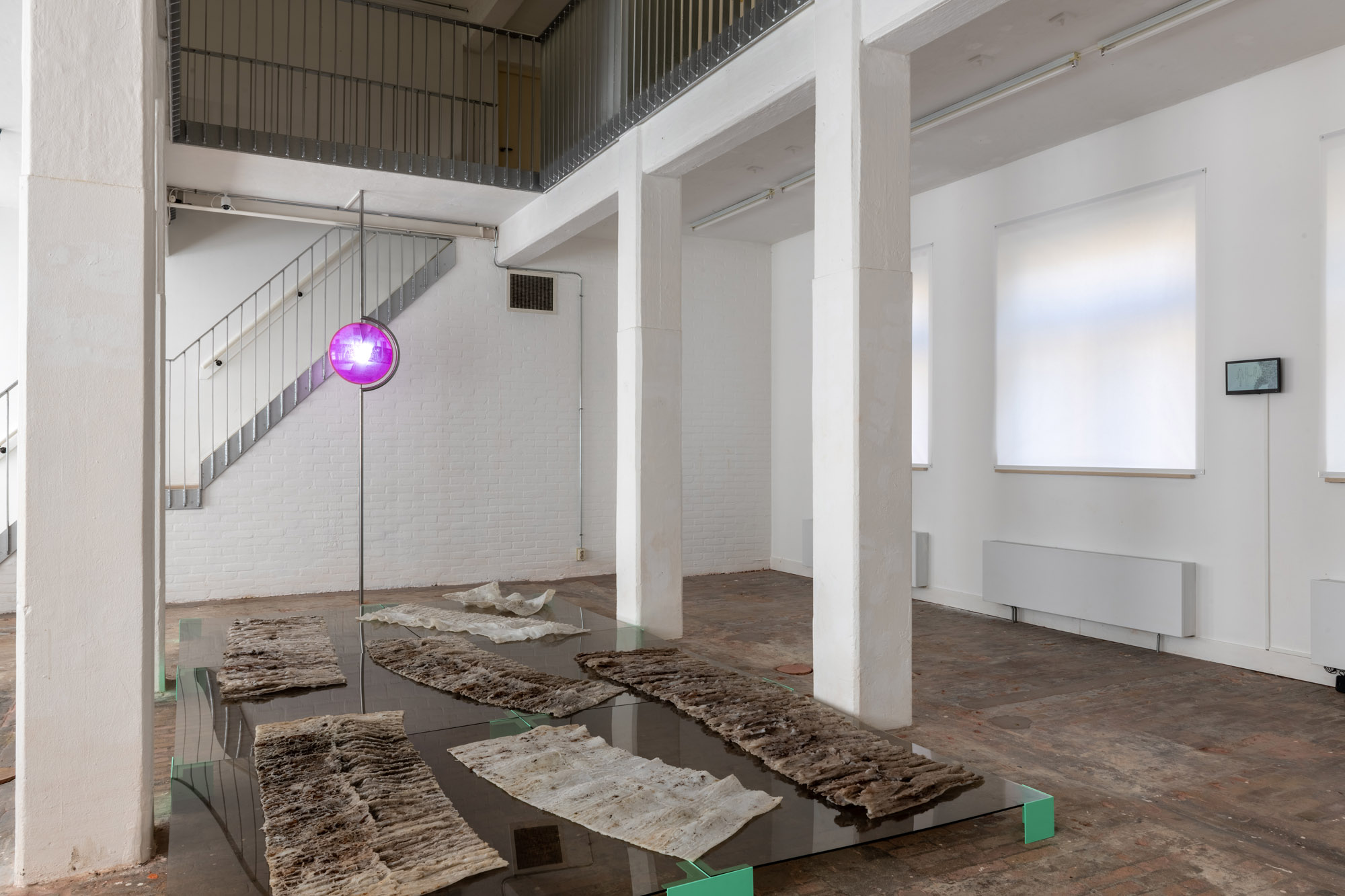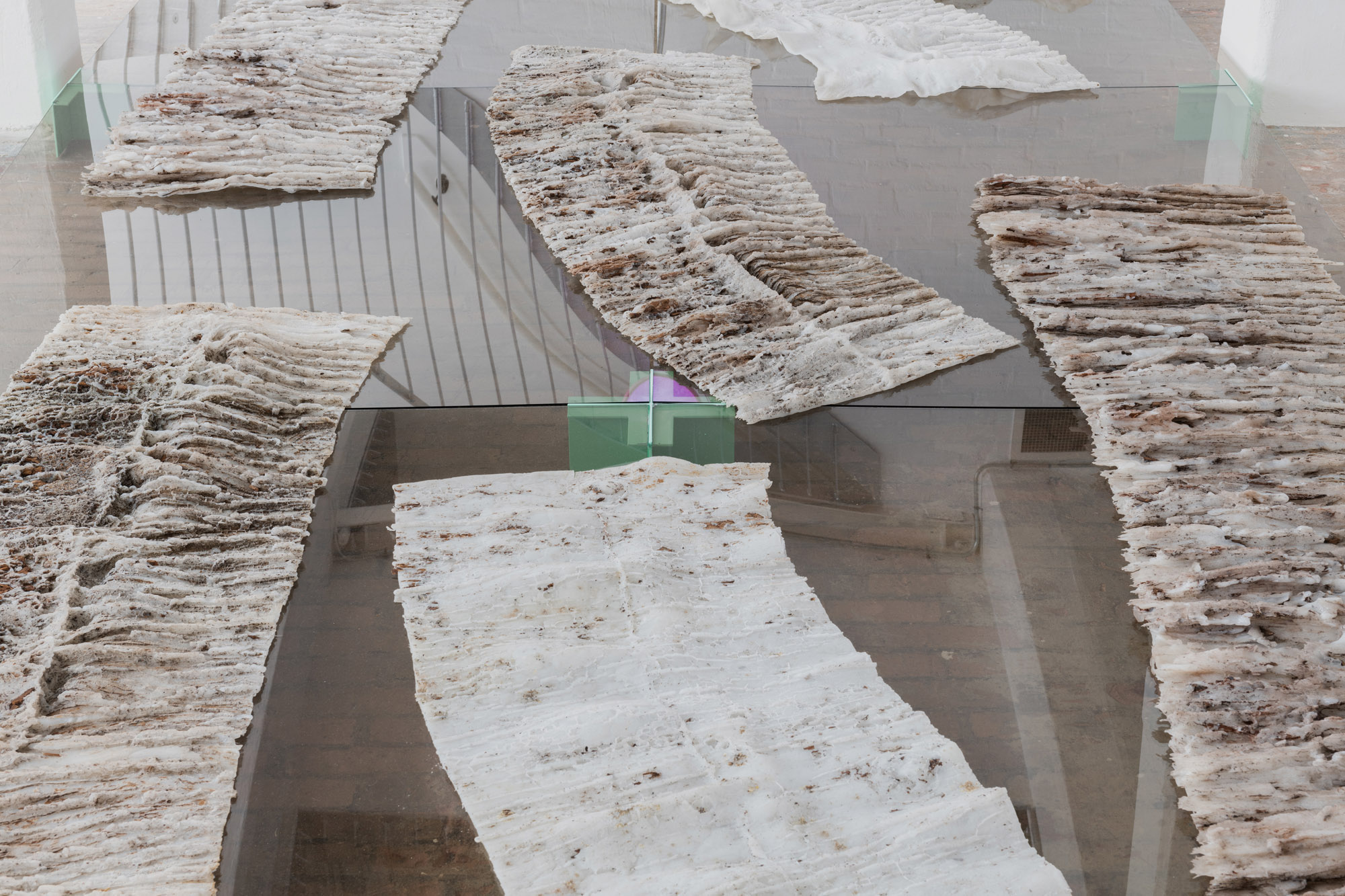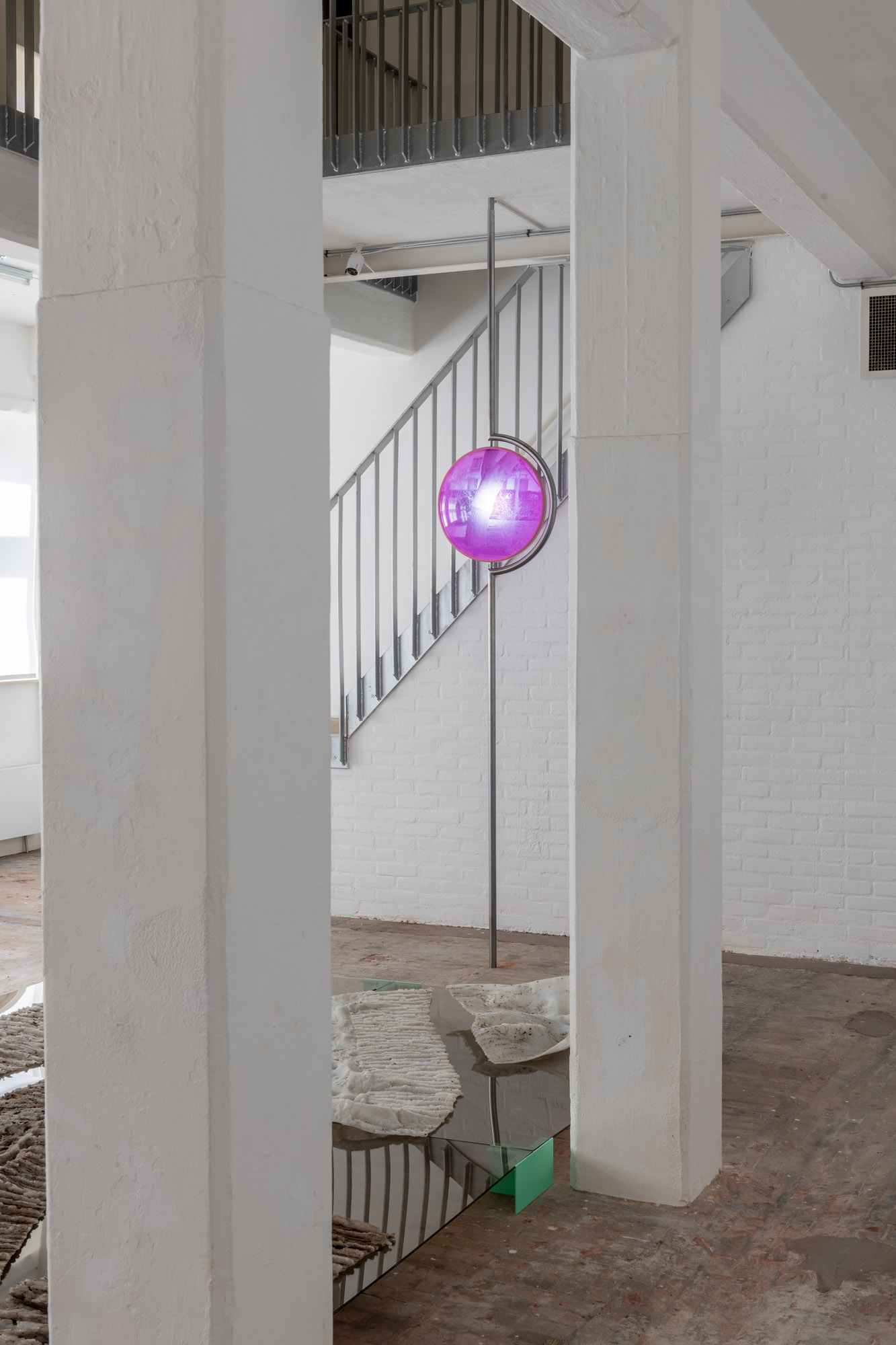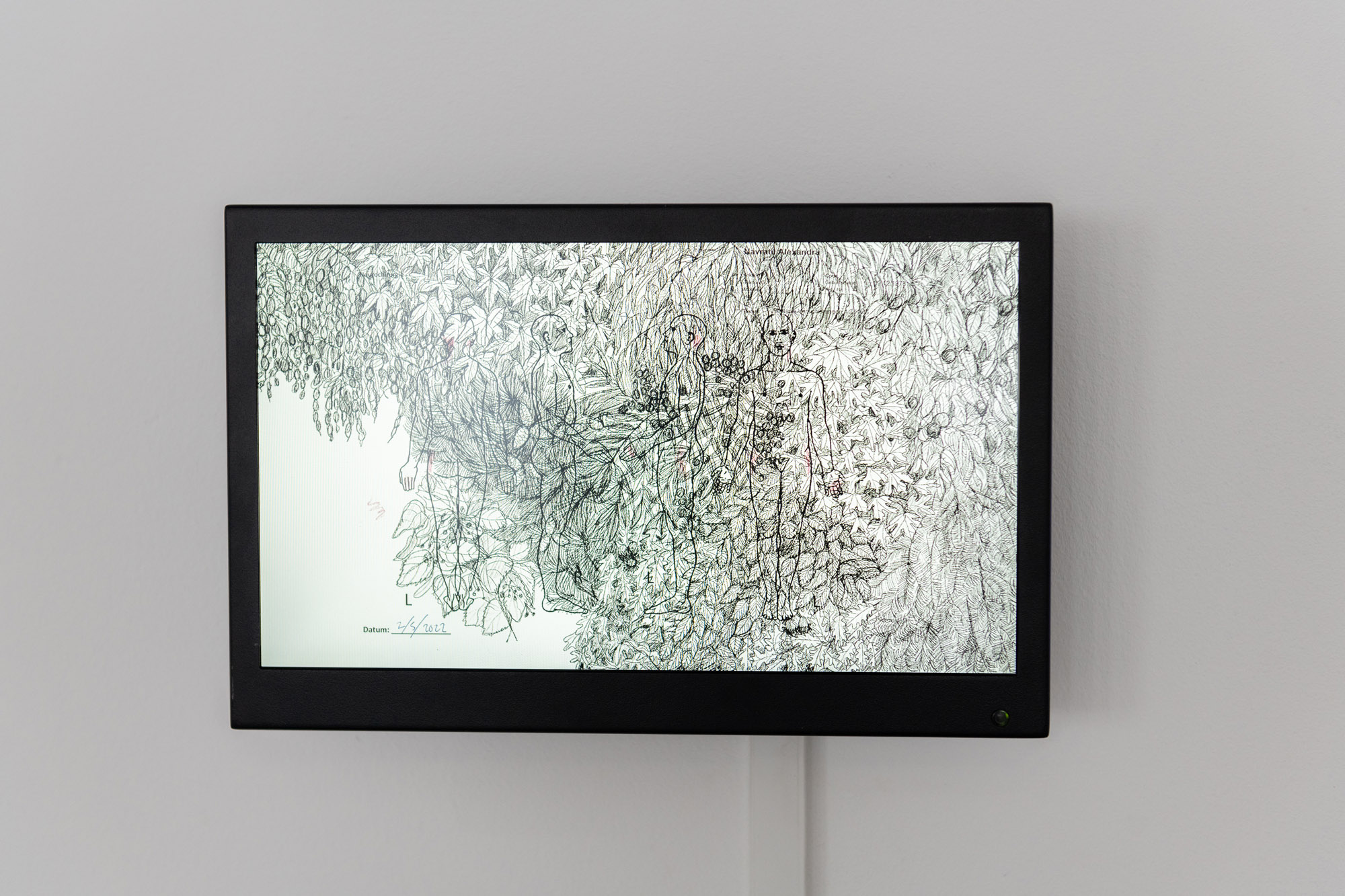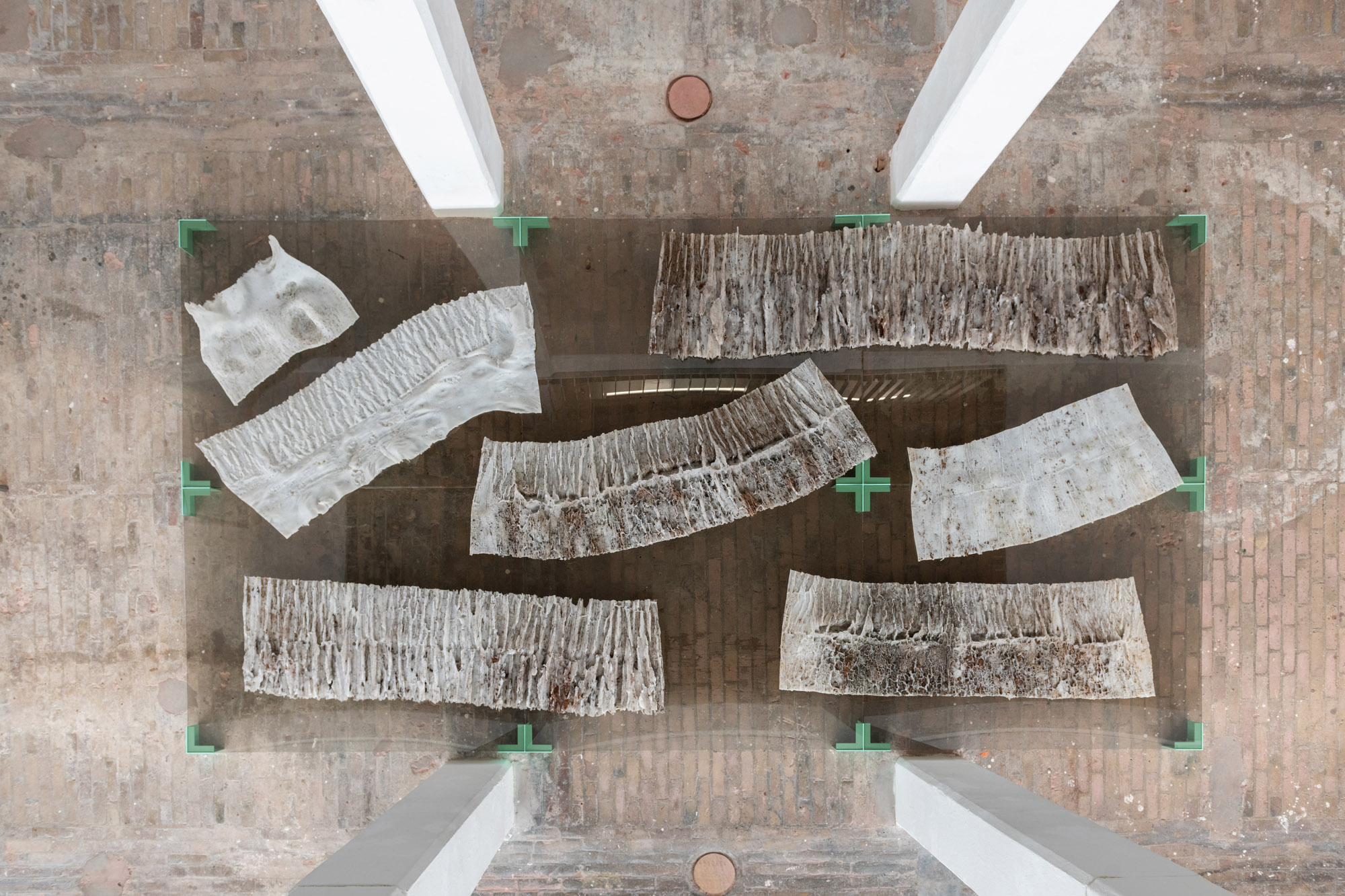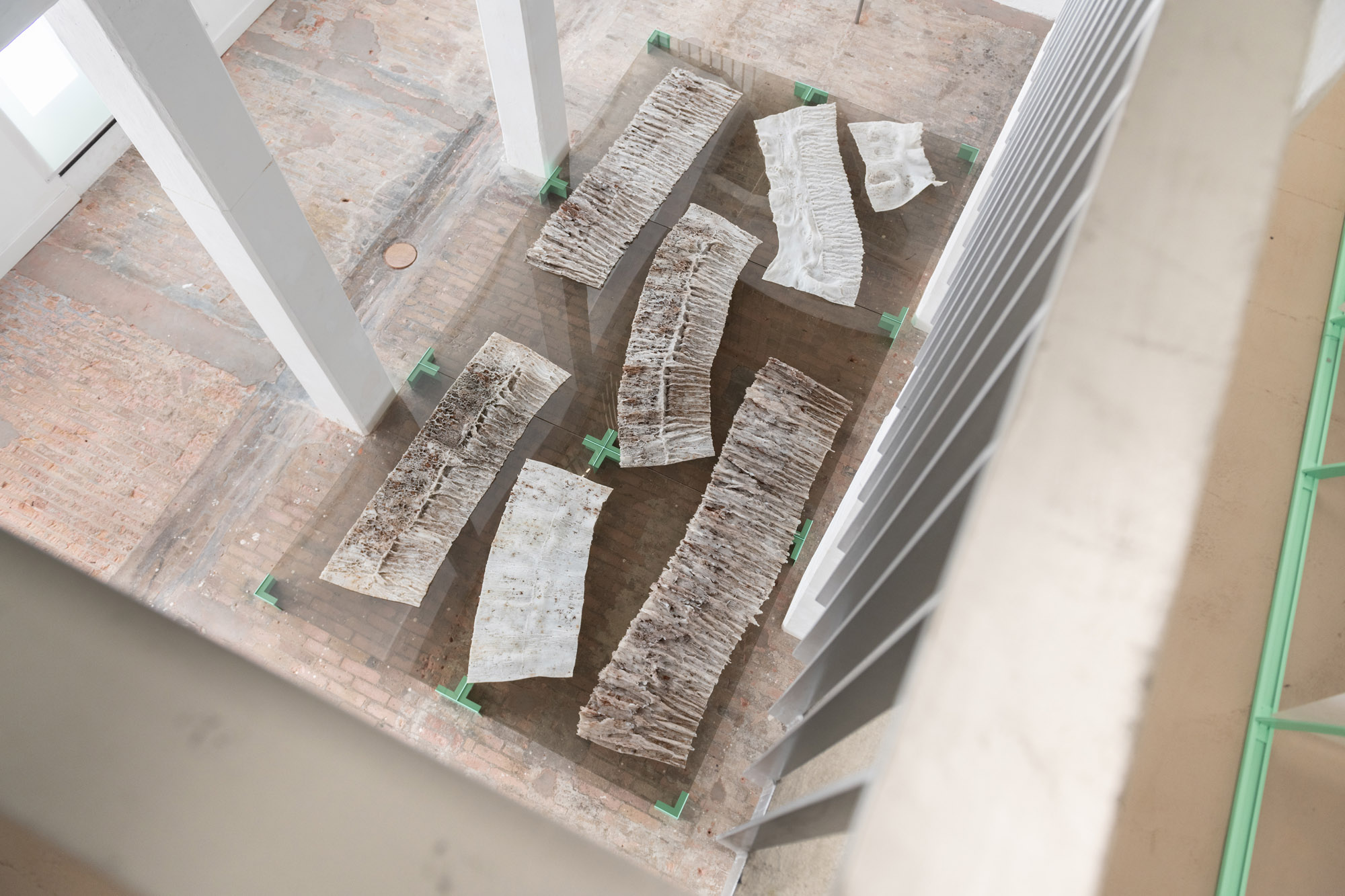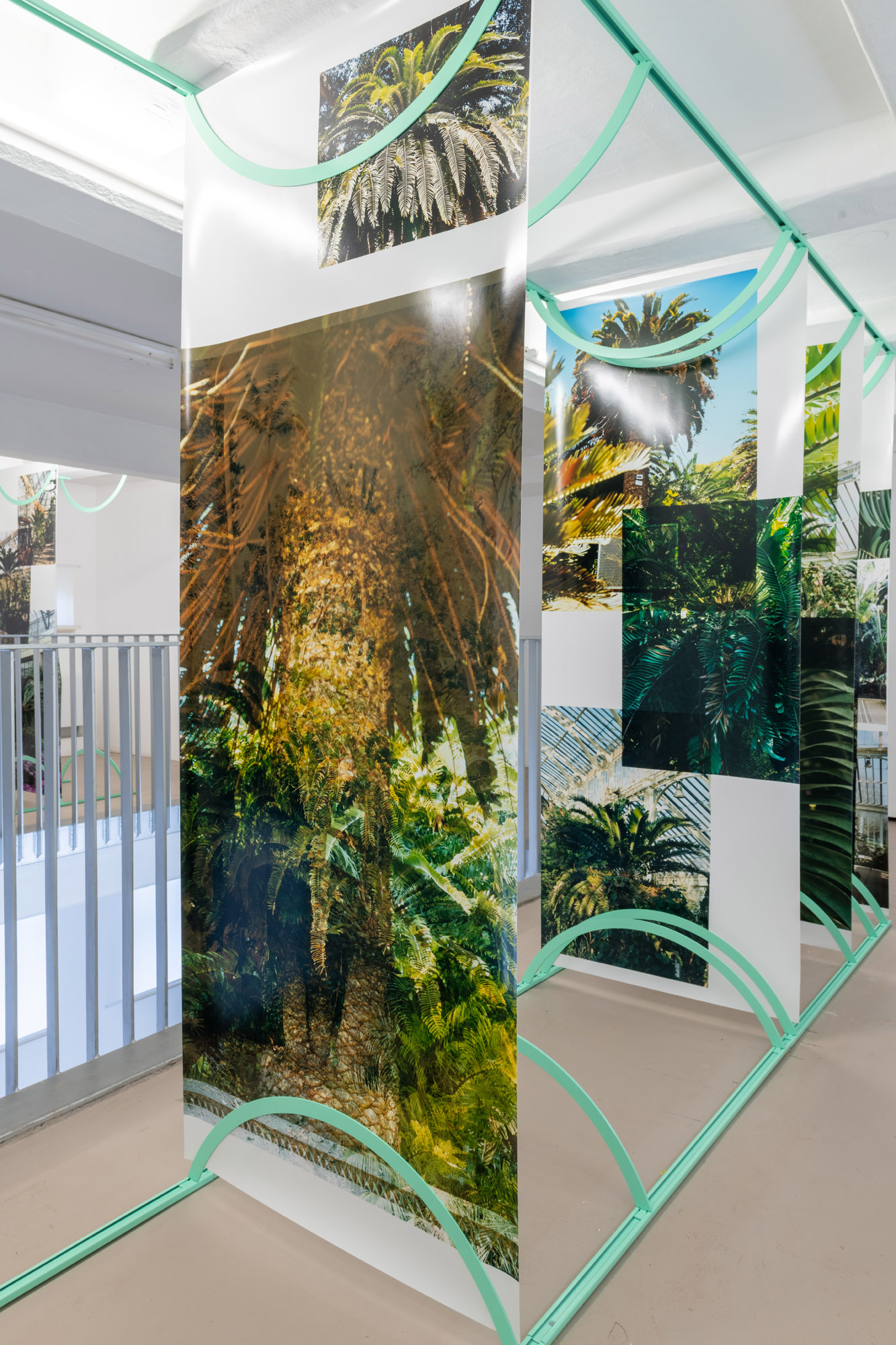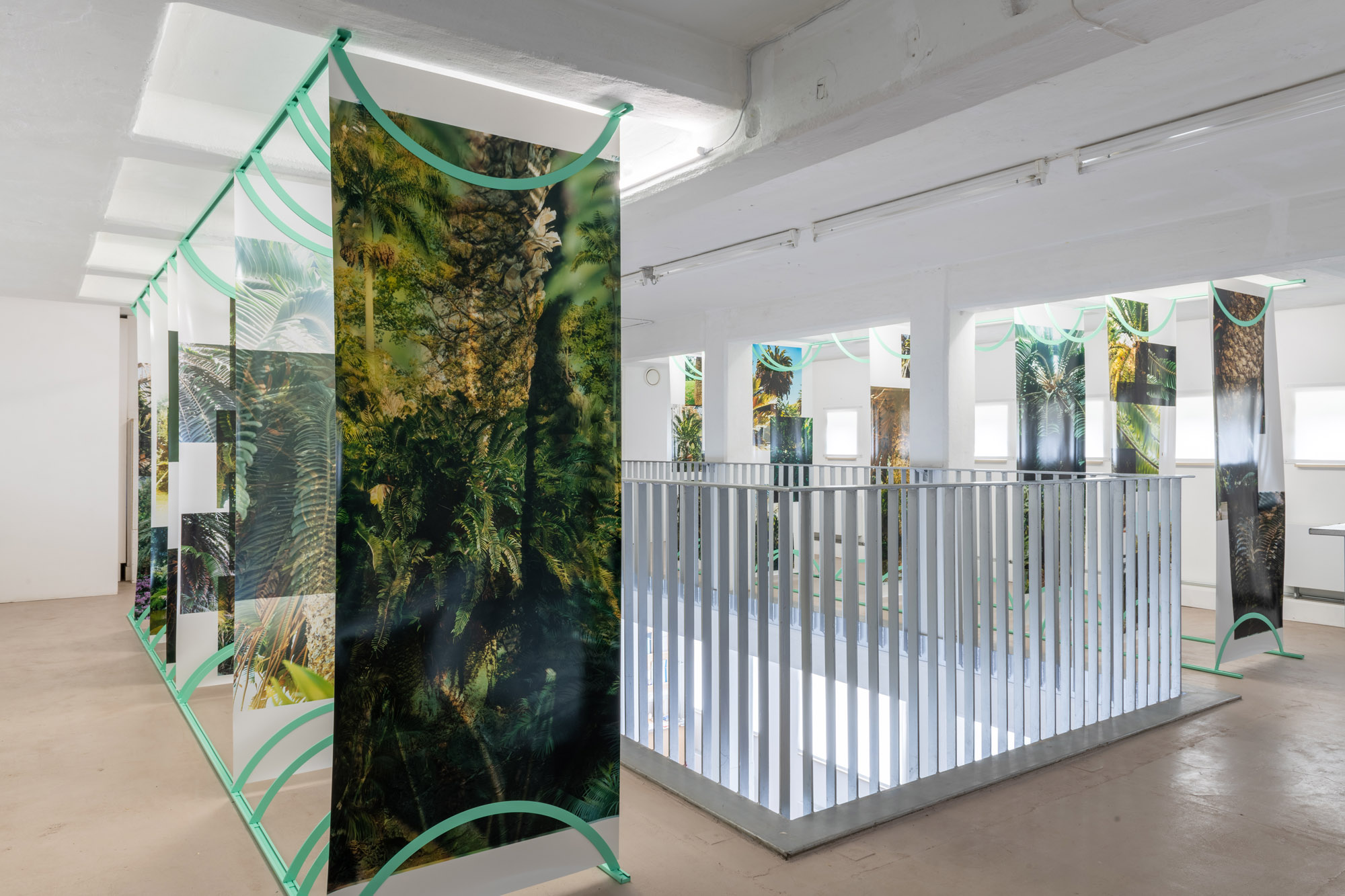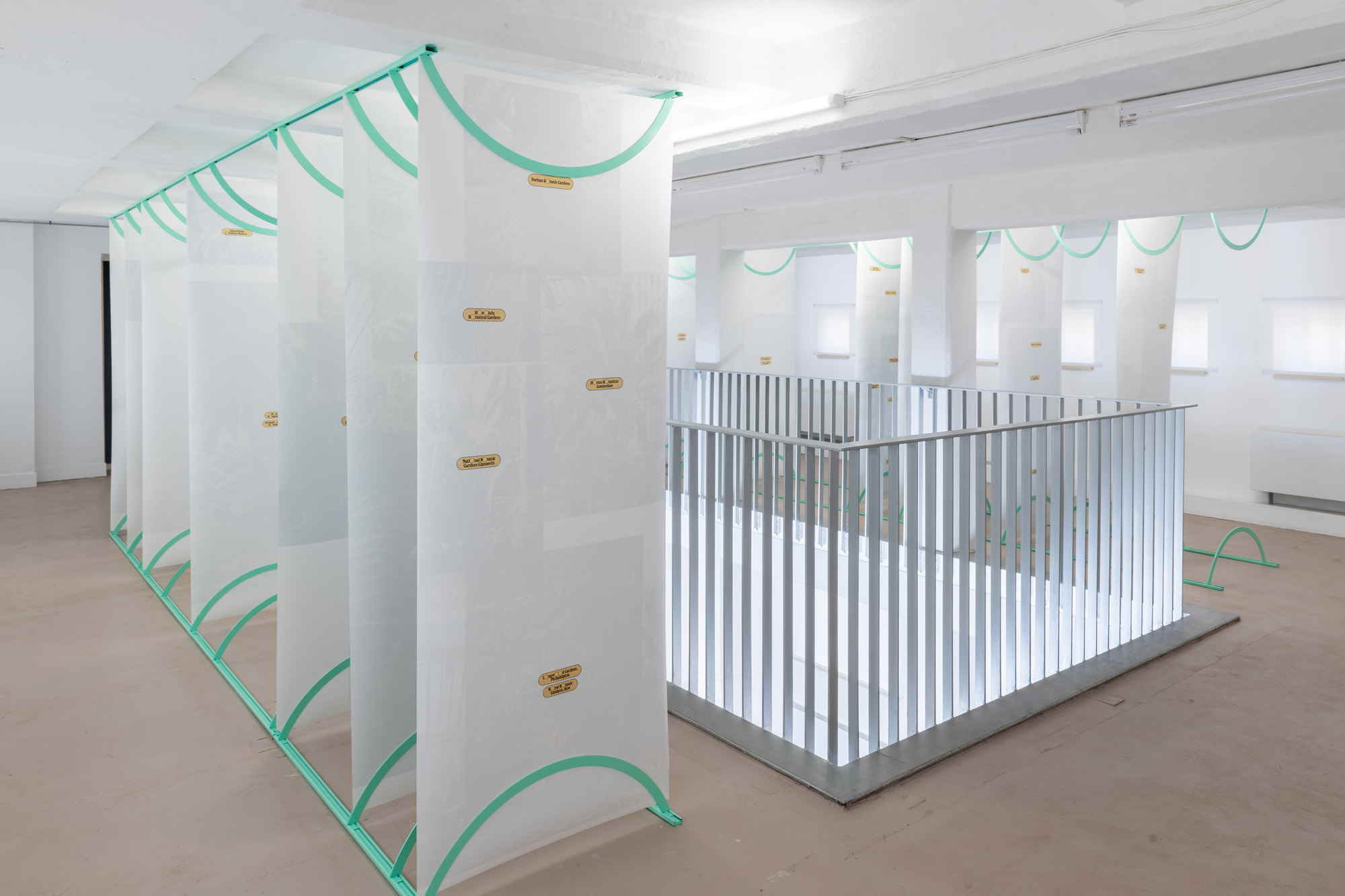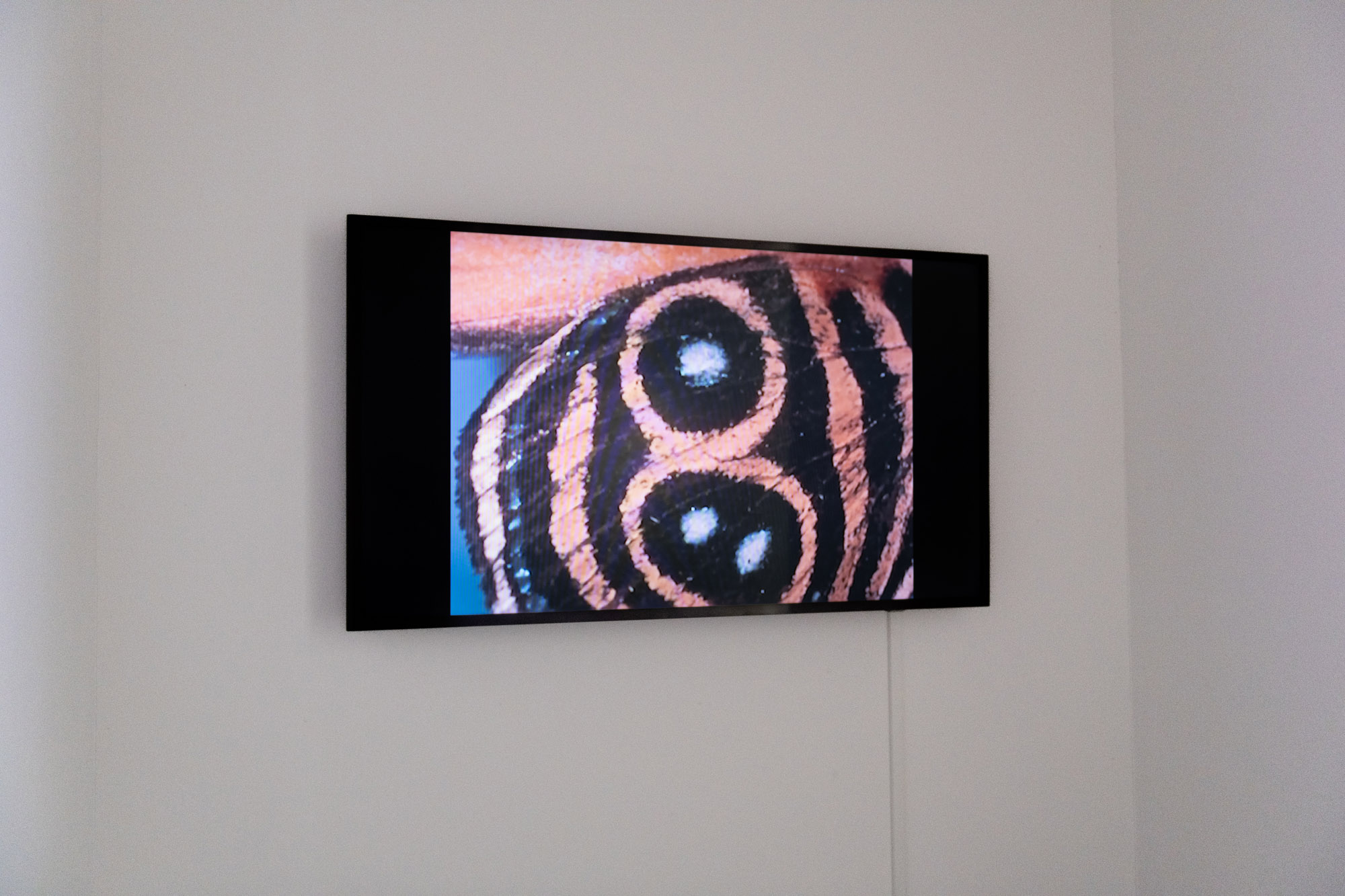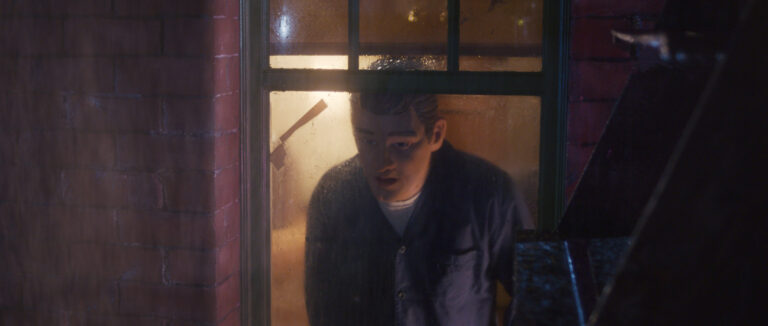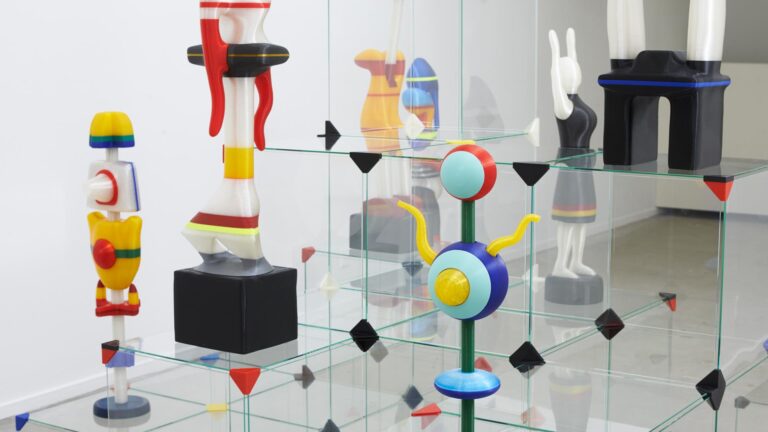Artist: Alexandra Navratil
Exhibition title: Being as a Tree
Curated by: Chus Martínez
Venue: A Tale of a Tub, Rotterdam, The Netherlands
Date: September 10 – November 6, 2022
Photography: all images copyright and courtesy of the artists and A Tale of a Tub, Rotterdam
The Rhythmic Divination Of a Species
On Being As A Tree by ALEXANDRA NAVRATIL
Could you imagine living the life of a tree? Monumental in size, alive but inert, they inhabit a different temporality than ours. Imagine the life of a tree this summer. Imagine trees wondering about us and our weird way of defying facts, of risking lives…
Growth rings reveal the seasonal formation of new cells in trees. Dendrochronologists and other researchers have developed various techniques to analyze such rings, but these can only provide a static view of the past. In Alexandra Navratil’s view, artistic practice can enrich science as it can provide real dynamic views on the natural and cultural history of trees. This conviction led her to create a new work in which she concentrated on a singular species: the Encephalartos woodii. This tree was found in 1985 by John Medley Wood on the edge of the Ngoye Forest in South Africa, and is the loneliest tree in the world. In 1899 it arrived in London, where it continues to live in solitude today.
This story enables Navratil to activate photography and cinema and the production of objects to provide many entrance points into life, some abstract—like the life of cells—some concrete and tangible. In this new work she entangles the language of the tree with the language of art to establish a dramatization on the future of the climate, the conditions of life and the poor choices we always seem to make in to dealing with them.
Conceptual Sensualism
I do not like the phrase “artistic research”, for it implies the existance of another kind of research, one related to life in a different, more profound and meaningful way than the arts. I do not like the word research, for it refers to a practice dedicated to abandoning surfaces to extract valuables from the depths, and add these to the circulation of knowledge… In my view, research is a cousin of mining, a straight line that traces a secure route, directs ideas, establishes a highway of meanings and creates vast territories of knowing the world.
But what to say then about the practice of Alexandra Navratil? I’d begin to say she’s one of the most serious scholars on how biology and history nourish image production systems. I’d also say she’s a studious artist, invested in unveiling the impossibility to understand photographic and filmic devices and processes as passive. Machine’s can’t capture “reality”, but they can offer reflections on the space where life takes place both in a biological and historical sense. Looking more closely at her production and work, we suddenly realize how difficult it is to relate the biological dimensions of the living to their historical conditions. Oh! It seems easier to imagine history without life and the development of life as seperated from the big questions of history.
Maybe photography and cinema were invented to reunite both without altering the logic of both substances too much.
In that sense the Encephalartos woodii—the loneliest tree in the world—is more than a case study to her practice, but it acts as a chronicler, an eloquent living organ telling tales of human interference. Around 500 individual male Encephalartos woodii plants grow in botanical gardens and private collections around the world today. All are descendants of the original, but there are no known female specimen on the planet, making it impossible for the trees to reproduce. It’s not easy to imagine the extinction of a species. The issue is not that we’re no longer able to “see” this plant, but we can’t see the remaining 500 plants simultaneously. For this vision to be accurate, we would have to see the plant in the full presence of all the indivuduals that constitute “the plant”, the species. Since we are cruel and simplistic, we reduce that vision by erasing the image of that remaining plant from our minds.
That’s probably why art and artists can be so fundamental. They enhance the compulsory fantasy of seeing it all at once, they’re invested in the creation of a more complex image of disappearance, one in respect to all the living forms and structures we are destroying, and not only the vanishing of a singular tree. It is for this reason that I call the operations that Alexandra Navratil activates in this work—and in so many others—conceptual sensualism. Conceptual for they direct us away from the singular tree (or its representations), and allow us to open up to the species and analyze the structures that led to its inherent loneliness. And sensual, for her work not only provokes thought and reflection to raise awareness using our analytical capacities, but it engages all our senses. If history (and the disappearance of species) becomes an experience, then not only our mind would remember but our retina, our skin, our hearing cells. Yes, also the hearing cells that would never, never again be able to hear the leaves of that quasi-palm rustling in the wind.
Photographic and Filmic Divination
Apollo fell in love with Cassandra, the daughter of Priam and Hecuba, and gave her the gift of prophecy. She rejected him however, so he cursed her so nobody would ever belief her again. When Cassandra announced the fall of Troy, the Trojans mocked her. There are aspects of the social and cultural structure of the female gender that are directly related to this myth. The talent and ability of women artists is often denied which prevents them from achieving the same levels of importance or power as male artists. How to live with this? Interestingly enough, embedded within Alexandra Navratil’s study is a quest for a space of relevance. Equality in both society and nature follows similar structures, since nature also seems to have none or very little agency and many impose their power over it. The installation-worlds of Alexandra Navratil are complexly designed yet they’re easy to relate to. They invite us on journeys that remind us how knowing leads to self-awareness. Her work is not about the Encephalartos woodii, but about the tree and us. About the tree in us. About the tree-mind we may become. Why do I need a tree mind? Because the human mind is unable to respect life and surrender to the beauty of it, to leaving space and to invest in mutuality.
This is the why of photography and film. It may play along that game of becoming something else. It is true, you thought—and so much has been written about it—that photography and film produce images mechanically. Well, what if the camera was a tree, or a bird? We are not yet able to produce living, disembodied organs that are capable of making images. But we may get there. Photography and film are eyes—eyes that see into another world and see from another world. Now that we’re beginning to recover the ability to imagine co-existence, we can reinvent those media as organs and penetrate a metaverse of spirituality, of magics, of interest in the vernacular, of desires. For a moment, consider the installation presented here not as an analytical proposal, but rather as a divinatory phantasy that has devoted all its efforts to travel to these sad worlds of lonely species, and has returned from them, exhausted but hopeful, full of ideas about how we can act differently.
Oh! I think there is another why to Alexandra Navratil’s interest in these entanglement of images, moving images, objects and biology. She believes in rhythm. Rhythm can be understood as a dynamic force that creates connections—unexpected connections even—upon matters studied. But rhythm is also a force that can positively affect the viewer, prompting them to transform their lives. Although philosophy has always been concerned with rhythm, this subject has always been treated outside the prevailing schools of thought(as with so many other subjects more directly related to life). It is mainly through the work of the French philosophers Gaston Bachelard, and later Henri Lefebvre, that the notion of rhythm reached a precise development. Inspired by the discoveries of early 20th century physics, Bachelard developed a theory of the self that privileged its “undulatory” nature. Like a photon or a chemical substance, he conceived of the self as a “vibrating” temporal being, centered around the experience of discontinuity (e.g., the split time of one’s action and the fragmented time of one’s consciousness).
Bachelard believed that the experience of discontinuity constituted a privileged way of accessing the understanding of time. If the course of an individual’s life is fundamentally divided, rhythm was conceived of as that which articulates the discontinuity of the instants lived (Sauvanet, 2000, p. 110). Consequently, the evolution of the self is conceived as “undulatory,” as a fabric made of tensions (e.g., successes and mistakes, forgetting and remembering) (Bachelard, 1950, p. 142).
Even if the work of Alexandra Navratil doesn’t directly reference Bachelard, I still believe both share the intuition that the continuous fostering of dynamic forces—rhythms—is a fundamental trait of an artistic and socio-pedagogical practice, intended to achieve methodological transformations in the structures of Western thinking on power.
Alexandra Navratil lives and works in Amsterdam, Zurich and Basel. She graduated from Goldsmiths College London and was artist-in-residence at EYE Film Museum Amsterdam, ISCP New York and IMMA Dublin, among others. Twice the winner of the Swiss Art Award, she has also been the recipient of the Manor Kunstpreis Kanton Zürich and the Prix Mobilière. In recent years her work has been shown in solo exhibitions at the Kunsthaus Langenthal, Kunstmuseum Winterthur, Stedelijk Museum Bureau Amsterdam, Centre Culturel Suisse Paris and Photoforum Pasquart Biel, as well as in institutional group exhibitions at Kunsthaus Zürich, Guggenheim Museum Bilbao, Moscow Museum of Modern Art, Fotomuseum Winterthur, Museum für Gegenwartskunst Siegen, CAPC Bordeaux, Museum Sztuki Lodz, ICA Philadelphia and de Appel Amsterdam. Her videos have been screened at Liverpool Biennale, Gulbenkian Museum Lisbon, Internationale Kurzfilmtage Oberhausen, EYE Filmmuseum Amsterdam, IFFR International Film Festival Rotterdam and Kochi-Muziris Bienale amongst other venues. She is a lecturer at Institut Art Gender Nature at FHNW in Basel.
Born in Spain, Chus Martínez has a background in philosophy and art history. She is currently the Head of the Institute of Art of the FHNW Academy of Arts and Design in Basel, Switzerland, and Artistic Director of Ocean Space, Venice, a space spearheaded by TBA21–Academy, as well as curator at large at The Vuslat Foundation in Istambul. She sits on the advisory boards of numerous international art institutions, including Castello di Rivoli, Turin; De Appel, Amsterdam; Deutsches Historisches Museum, Berlin; and Museum der Moderne, Salzburg. She has been the Chief Curator at El Museo Del Barrio, New York and dOCUMENTA (13) Head of Department. Previously she was Chief Curator at MACBA, Barcelona, Director of the Frankfurter Kunstverein. Martínez has organized numerous exhibitions and publications with contemporary artists. She lectures and writes regularly including numerous catalogue texts and critical essays, and is a regular contributor to international journals. Recent publications are Like This. Natural Intelligence As Seen by Art. Hatje Cantz Verlag (2022); The Wild Book of Inventions, Sternberg Press (2020), Corona Tales. Let Life Happen to You, Lenz, (2021).
Alexandra Navratil, Being as a Tree, 2022, exhibition view, A Tale of a Tub, Rotterdam
Alexandra Navratil, Being as a Tree, 2022, exhibition view, A Tale of a Tub, Rotterdam
Alexandra Navratil, Being as a Tree, 2022, exhibition view, A Tale of a Tub, Rotterdam
Alexandra Navratil, Iep, Es, Els, Kers (seams), 2022, silicone, bark, glass, powder coated steel, 450 x 236 x 25cm
Alexandra Navratil, Being as a Tree, 2022, exhibition view, A Tale of a Tub, Rotterdam
Alexandra Navratil, Being as a Tree, 2022, exhibition view, A Tale of a Tub, Rotterdam
Alexandra Navratil, Iep, Es, Els, Kers (sign), 2022, plexiglas, digital print, powder coated steel, polished steel, LED light, cable, Dimensions variable
Alexandra Navratil, Spell, 2022, video, colour, no sound, 5:30 min
Alexandra Navratil, Spell, 2022, video, colour, no sound, 5:30 min
Alexandra Navratil, Iep, Es, Els, Kers (seams), 2022, silicone, bark, glass, powder coated steel, 450 x 236 x 25cm
Alexandra Navratil, Iep, Es, Els, Kers (seams), 2022, silicone, bark, glass, powder coated steel, 450 x 236 x 25cm
Alexandra Navratil, E. WOOdi, 2022, analogue photographic colour prints, powder coated steel 2 units a 500 x 200 x 76,2 cm
Alexandra Navratil, E. WOOdi, 2022, analogue photographic colour prints, powder coated steel 2 units a 500 x 200 x 76,2 cm
Alexandra Navratil, E. WOOdi, 2022, analogue photographic colour prints, powder coated steel 2 units a 500 x 200 x 76,2 cm
Alexandra Navratil, E. WOOdi, 2022, analogue photographic colour prints, powder coated steel 2 units a 500 x 200 x 76,2 cm
Alexandra Navratil, The Fluttering Being, 2022 video, colour, sound, 5:30 min, sound by Natalia Dominguez Rangel
Alexandra Navratil, The Fluttering Being, 2022 video, colour, sound, 5:30 min, sound by Natalia Dominguez Rangel

